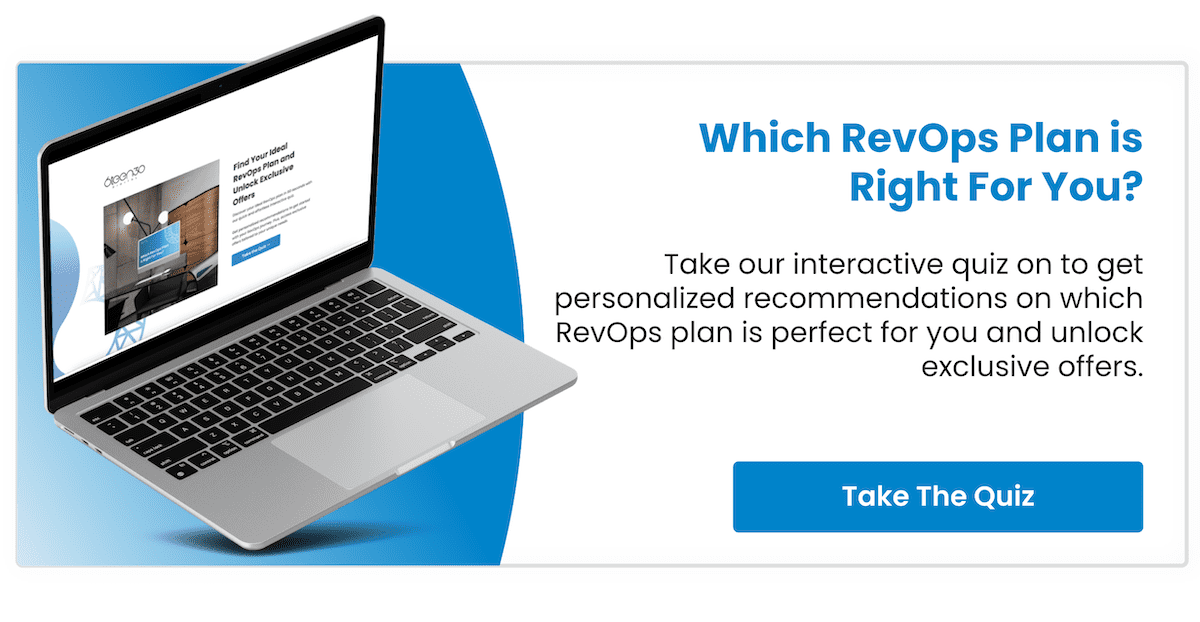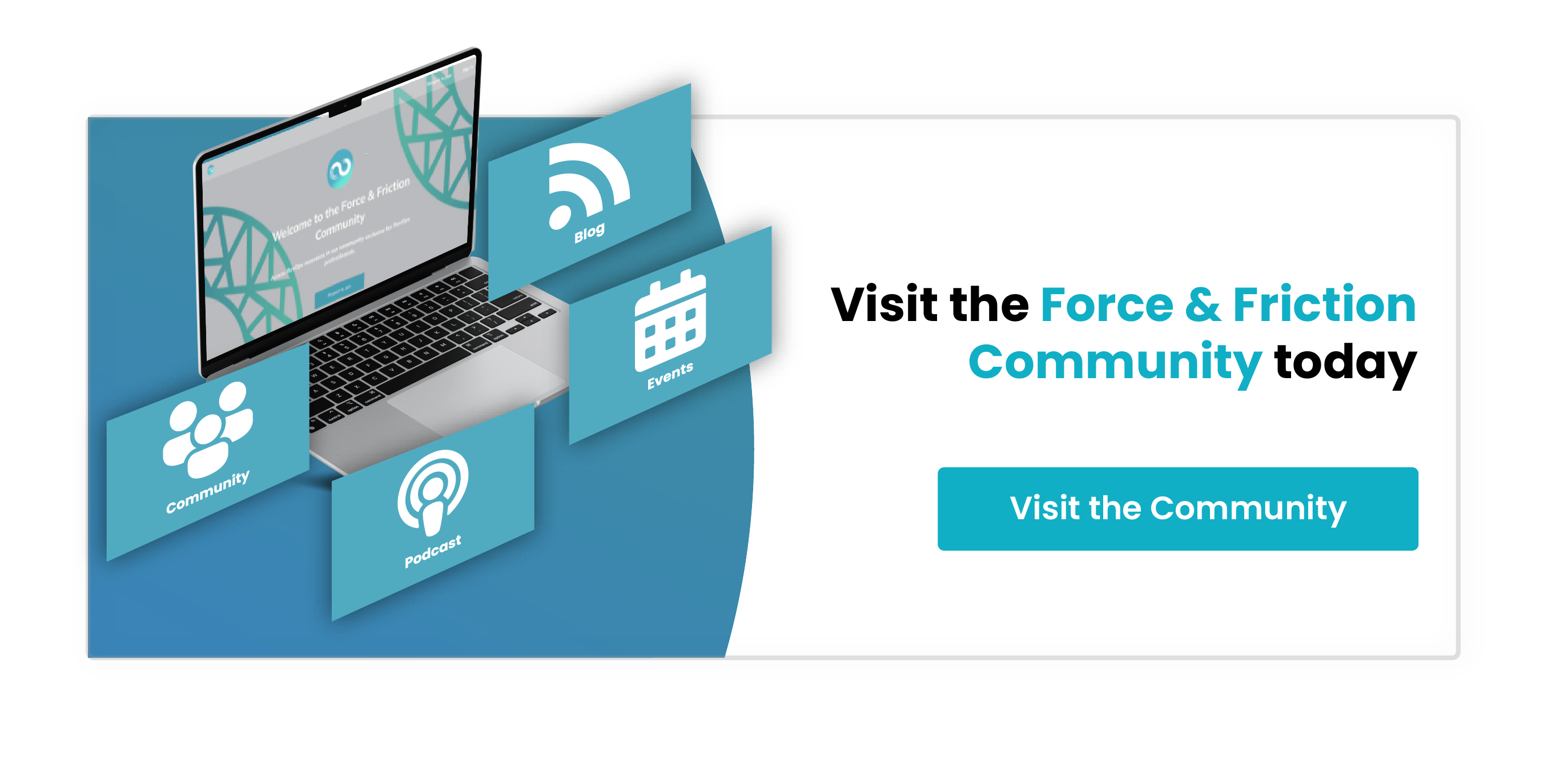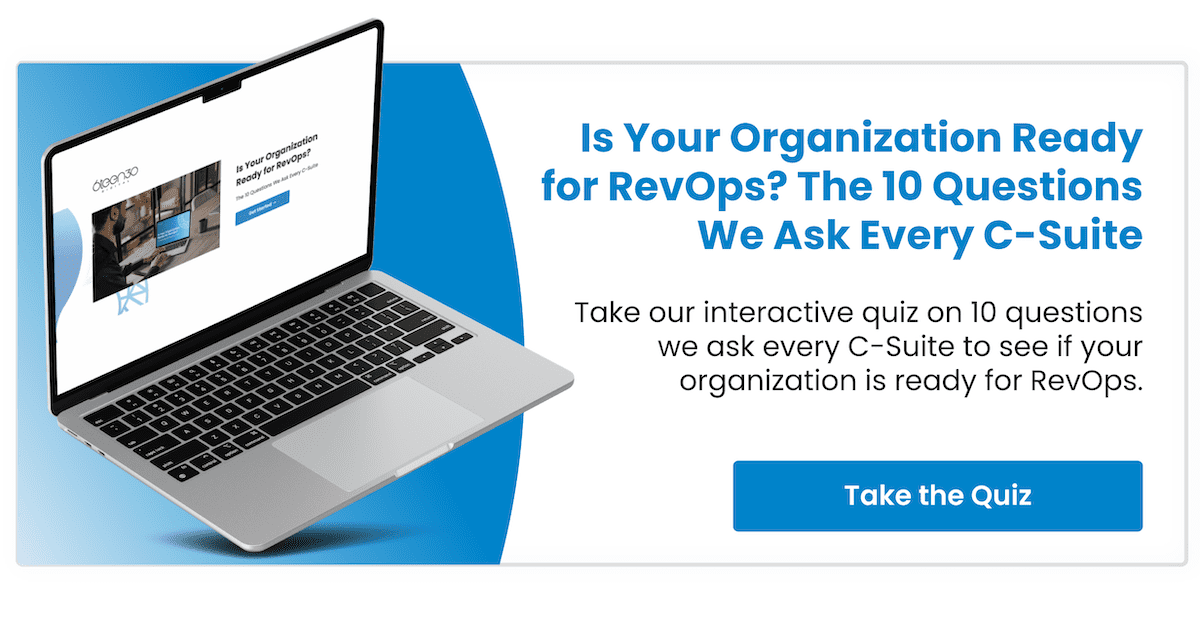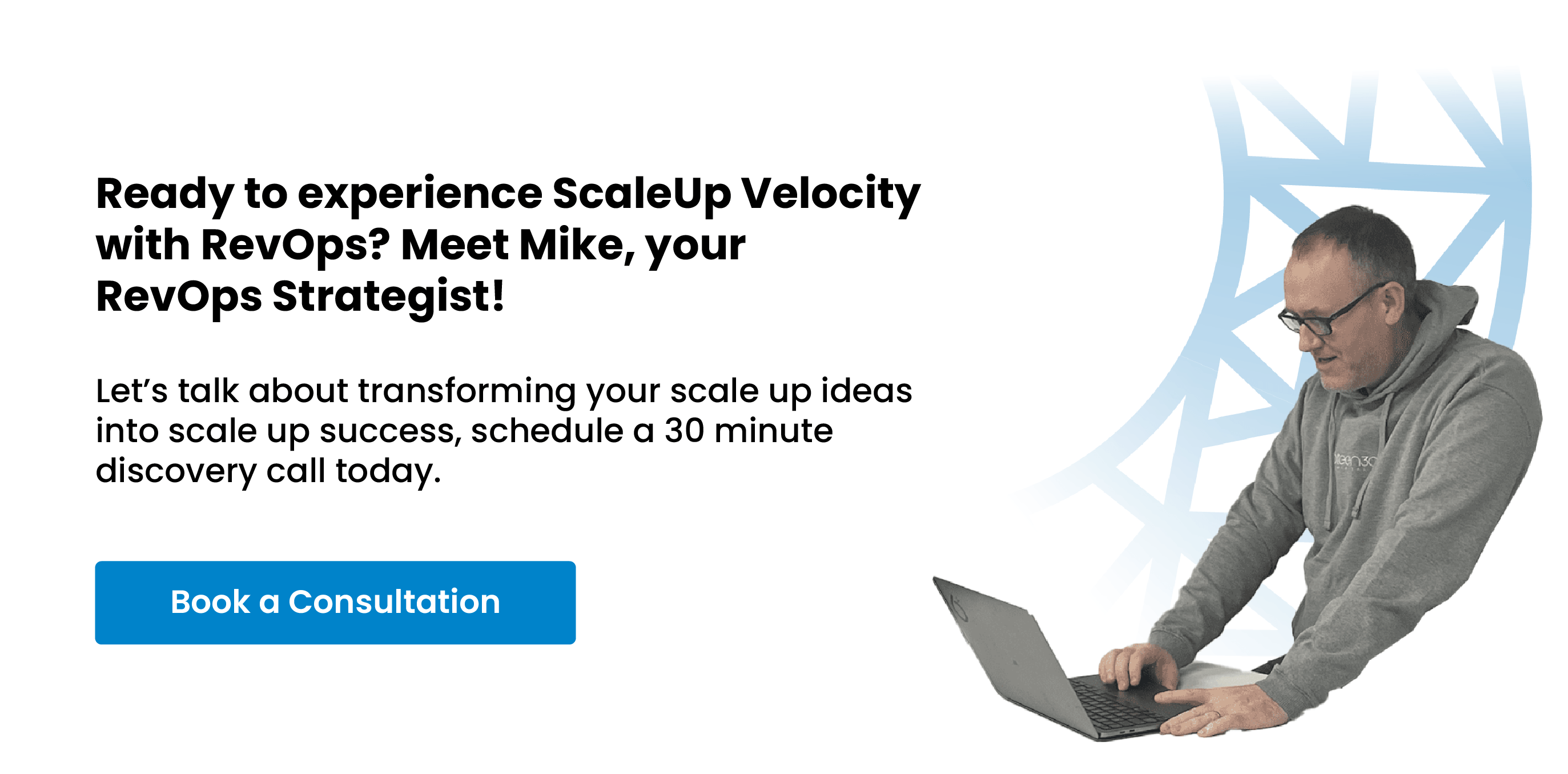
Harnessing the Power of Force and Friction in Your RevOps Strategy
A siloed approach in your operations can limit growth and stifle innovation.
If you are looking to maximize your potential, adopting a Revenue Operations (RevOps) strategy is essential.
By integrating your sales, marketing, and customer success operations, implementing RevOps provides you with a holistic view of the customer lifecycle, enabling companies to break through traditional barriers and achieve exponential growth.
At the heart of a successful RevOps strategy lies the understanding of two key concepts:
Force and Friction.
As an Agency RevOps Strategist, I cannot emphasize the importance of identifying and optimizing these two elements within your organization's flywheel.
In this #RevOpsLife article, I break down and explore the roles that force and friction play in your RevOps strategy, and how you can optimize them to propel your business forward.
Force: Accelerating Growth Through Positive Interactions
Force is the driving factor that propels your flywheel, increasing its velocity and fueling your company's growth.
By implementing programs and strategies that create positive interactions and experiences for your customers, you can amplify the force within your flywheel, make it spin faster and achieve your goals with an increased velocity.
A prime example of force is a delighted customer who shares their positive experience with friends and colleagues, attracting new prospects to your business.
As these prospects become customers and share their experiences, your reach grows exponentially, breaking through the barriers of linear growth.
To optimize force in your RevOps strategy, focus on the following areas:
1: Invest in customer support and success:
Ensuring your customers receive the help they need to achieve their goals with your product or service is crucial for their satisfaction.
By investing in customer support and success, you can create a strong foundation for delight, leading to positive word-of-mouth and increased customer retention.
Here are some practical examples:
-
Clients love to be supported on their agenda, 24/7 365 days a week if necessary….you can satisfy this by implementing a knowledge base in HubSpot or FAQ section on your website to help customers find answers to common questions quickly and easily.
-
You can offer various support channels, such as email, live chat, whatsapp / facebook messenger and phone, to cater to different customer preferences. All of these channels can be set up inside HubSpot ServiceHub
-
Develop a comprehensive onboarding program to help new customers get started with your product or service.
-
Restructure your customer success team and train them to support proactively, by identifying and addressing customer challenges before they escalate.
2: Align sales and marketing efforts with customer delight:
Reviewing your sales and marketing processes to identify opportunities to increase customer satisfaction is essential for creating a seamless experience. This might involve re-evaluating sales incentives, creating helpful content, or streamlining the purchasing process.
Here are some practical examples:
-
Align your sales incentives with customer satisfaction metrics, rewarding salespeople for creating positive customer experiences not just sales, i..e how successful the client is with your product or service.
-
Develop educational and informative content that addresses customer pain points and help them make informed decisions at each stage of their journey.
-
Simplify the purchasing process by reducing the number of steps, offering multiple payment options, and providing clear pricing information with online e signature, you can incorporate full presentations with video, images, and quotations all inside HubSpot Sales Pro, link it to e-signature and even take payments in full or in spread payments.
3: Measure and track force:
Implementing metrics and KPIs to gauge the effectiveness of your force-enhancing initiatives allows you to make data-driven decisions and continuously improve your strategies.
Here are some practical examples:
-
Monitor customer satisfaction scores (CSAT) or Net Promoter Scores (NPS) to track the impact of your customer support and success efforts on customer happiness. You can deliver this inside HubSpot ServiceHub
-
Analyze sales and marketing metrics, such as conversion rates, lead-to-customer ratios, and customer lifetime value, to assess the effectiveness of your sales and marketing alignment.
-
Use customer feedback and reviews to identify areas where your company excels and where improvements can be made.
-
Regularly review and update your KPIs to ensure they remain relevant and aligned with your business objectives. Keep a vulnerable and open mind to change, be your own harshest critic and see it from the eyes of your customer.
Friction: Identifying and Eliminating Roadblocks
Friction, on the other hand, acts as a roadblock, slowing down your flywheel and hindering your company's progress.
By identifying and eliminating sources of unnecessary friction, you can create a smoother customer journey and more efficient internal processes.
To remove and optimize friction in your RevOps strategy, consider the following steps:
1: Audit the client experience:
Identify areas where your customers face obstacles or frustrations in their interactions with your company. Prioritize these issues based on their impact on customer satisfaction and the ease with which they can be resolved.
Here are some practical examples of client friction:
-
Long wait times for customer support:
You can address this by implementing a callback feature, chatbot, or self-service portal to reduce wait times and help customers find answers quickly. -
Confusing website navigation or product information:
Commit to improving your website's user experience by simplifying navigation, using clear language, and providing comprehensive product details. Introduce a growth-driven design HubSpot CMS website that is constantly learning and dynamic so it updates with your business. -
Hidden fees or complicated pricing structures:
Be transparent about all costs and fees, offering easy-to-understand pricing tiers and options.
2: Streamline internal processes:
Examine your organization's internal processes and systems to pinpoint areas of inefficiency, duplication, or misalignment. By addressing these issues, you can empower your customer-facing teams to deliver better experiences.
Here are some practical examples of internal friction:
-
Inconsistent processes between departments:
Establish your company-wide standards and guidelines to ensure a consistent approach across all teams. Avoid doing different processes to achieve the same outcome. -
Lack of communication or collaboration between teams:
Make a commitment to implement cross-functional meetings, shared goals, and collaboration tools to facilitate communication and teamwork. -
Insufficient employee training or resources:
Allocate budget and invest in comprehensive training programs and provide access to necessary resources, enabling employees to excel in their roles.
3: Implement a continuous improvement mindset:
Review and refine your processes, systems, and strategies to minimize friction and enhance the customer journey. This iterative approach ensures that your organization stays agile and responsive to changing customer needs.
Here are some practical examples of continuous improvement:
-
Conduct regular customer feedback surveys:
To identify areas for improvement and track the effectiveness of implemented changes. -
Encourage a culture of open communication:
Where employees feel empowered to share their ideas and suggestions for improving the customer experience. -
Utilize data analytics:
To monitor key performance indicators (KPIs), identifying trends and opportunities for optimization.
Consider Implementing Positive Friction:
Positive friction is the deliberate introduction of obstacles or challenges in the customer journey to ensure prospects or clients take the necessary steps to make informed decisions, or, self-qualify, and ultimately achieve better outcomes with your product or service.
By incorporating thoughtful checkpoints, you can provide an opportunity for customers to reflect on their needs, align expectations, and gain a deeper understanding of the value your offering provides which means ultimately the client's success goals are more achievable with expectations set.
Here are some practical examples of positive friction:
-
Requesting additional questions:
This could be on your sign-up or gated content to pre-qualify or make the prospect think about the action they are taking to reduce bad fit leads entering your pipeline. -
Step by Step Exploration:
By guiding prospects through a step-by-step exploration of your product's features and benefits helps them gain a clear understanding of how it can address their specific pain points, ensuring they make a well-informed purchasing decision. -
Adopt a consultative sales approach:
Instead of aggressively pushing your product or service, adopt a consultative approach that focuses on understanding the prospect's needs, challenges, and goals. This slower, more thoughtful process fosters trust and ensures customers feel confident in their decision to choose your offering.
Conclusion:
Optimizing force and friction within your RevOps strategy is essential for harnessing your organization's complete potential and driving sustainable growth.
By concentrating on delighting customers, removing unnecessary friction points, and implementing positive friction where needed, you can create a more satisfying and efficient customer journey that encourages long-term loyalty.
In addition to this, a strong focus on streamlining internal operations and fostering cross-departmental collaboration enables your team to deliver a seamless customer experience.
Embrace a continuous improvement mindset, where you consistently evaluate and refine your processes to stay agile and responsive to your customers' evolving needs.
To further boost your RevOps strategy, invest in customer support and success initiatives, align sales and marketing efforts with customer delight, and establish metrics and KPIs to measure the effectiveness of your force-enhancing actions.
These steps will empower you to make data-driven decisions and continuously improve your strategies.
Are you ready to unlock your company's full potential and create a self-sustaining growth engine that drives success in the long run?
Get started with 6teen30 Digital GamePlan to optimize your RevOps strategy and take your business to new heights that your clients will love and your team will embrace.
Schedule a consultation with our expert team today, and we'll help you identify opportunities for improvement, develop tailored solutions, and guide you on the path to success.









%20-%20Teal.png?width=500&height=130&name=Force%20%26%20Friction%20-%20Branding%20-%20Logo%20(White)%20-%20Teal.png)